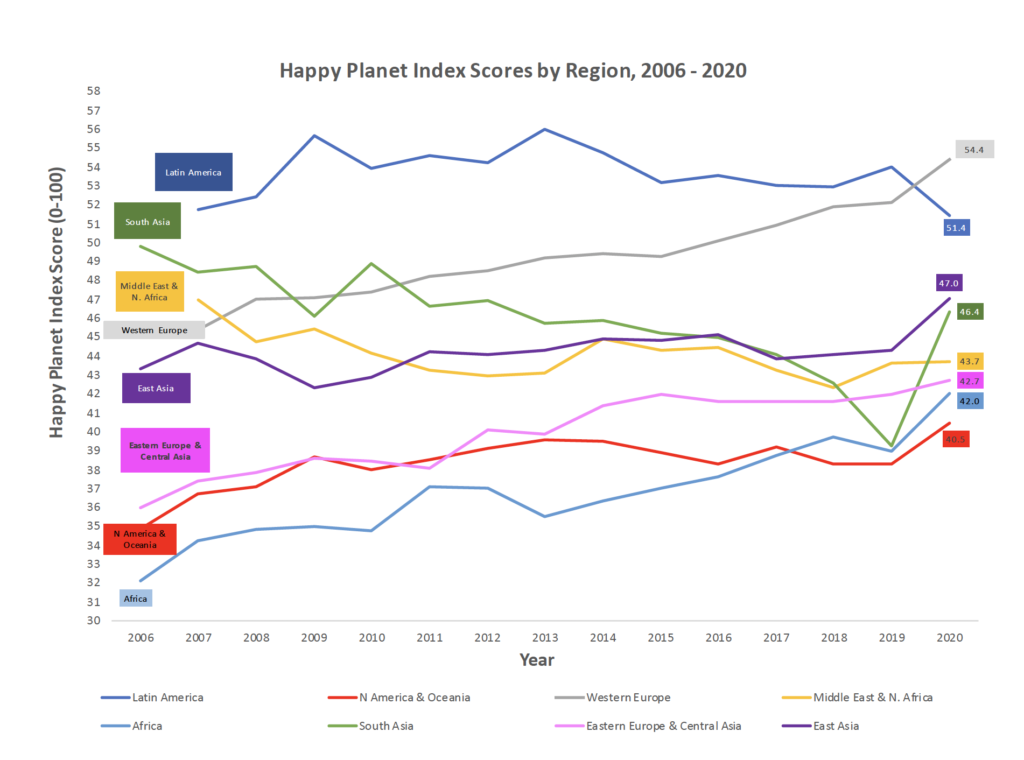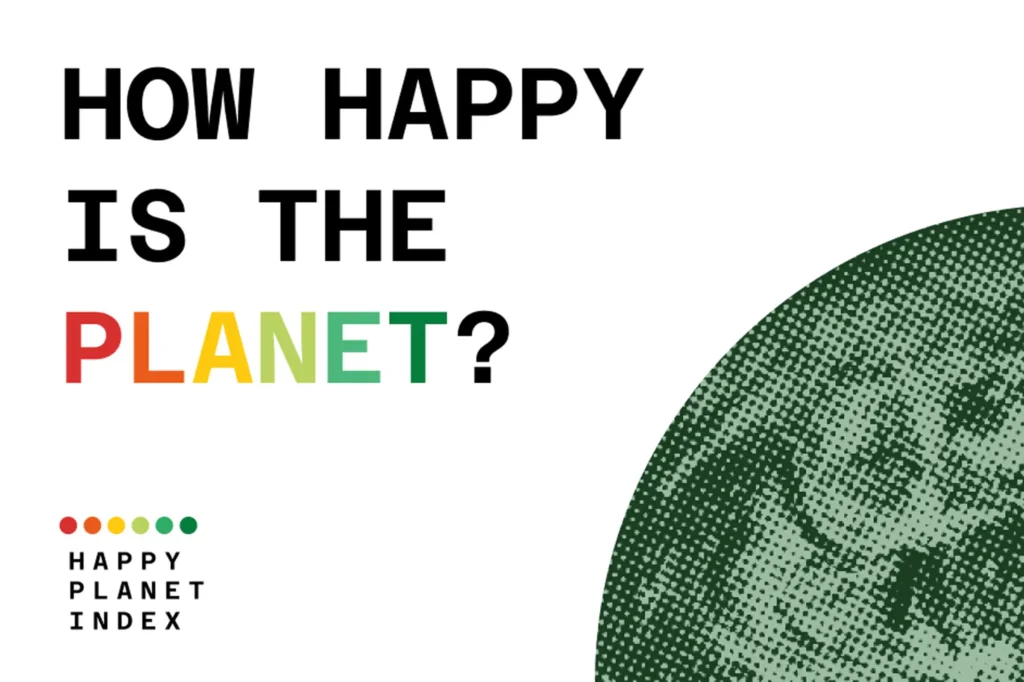Table of Contents
- 1 How to Measure "Well-being"?
- 2 Introduction to the Happy Planet Index (HPI)
- 3 Components of the Happy Planet Index
- 4 Calculating the Happy Planet Index
- 5 The Happy Planet Index Rankings (2019)
- 6 Case Studies: Countries with Remarkable HPI Success Stories
- 7 Criticisms and Controversies Surrounding the HPI
- 8 Advantages and Benefits of the HPI
- 9 HPI and Global Progress: Shaping a Brighter Future
- 10 Conclusion
How to Measure "Well-being"?
Everyone wants a happy and beautiful future. But what kind of society, environment, or place is that? Having lots of money? Convenience through technological development? Freedom to do whatever you want?
The “Happy Future” that everyone desires is actually a very vague image.
What if there was an index to measure “well-being”? What if we could create a clearer and better society based on those indicators? This time, we would like to talk about such an epoch-making new indicator.
Introduction to the Happy Planet Index (HPI)
The Happy Planet Index (HPI) is a revolutionary metric that transcends traditional economic indicators to assess a country’s overall well-being and sustainability. While Gross Domestic Product (GDP) has long been used as a measure of progress, it fails to account for crucial aspects such as happiness and environmental impact. The HPI addresses this gap by combining three essential components: happiness, life expectancy, and ecological footprint.
Components of the Happy Planet Index
- Life Satisfaction (Happiness): The HPI incorporates subjective well-being through the measurement of life satisfaction. Surveys and data on individual happiness levels are gathered to understand how people perceive their quality of life within a country.
- Life Expectancy: Life expectancy is a key indicator of overall health and well-being within society. It reflects access to healthcare, nutrition, and living conditions, all of which significantly impact a country’s HPI score.
- Ecological Footprint: The ecological footprint represents the environmental impact of a country’s resource consumption. It measures the amount of biologically productive land and sea area required to sustain the lifestyle of its population, including food, energy, and other resources.
Calculating the Happy Planet Index
To calculate the HPI, each component is normalized and then combined to create a composite index. Normalization ensures that the different factors are on a consistent scale, making it possible to compare countries and assess progress over time.
For life satisfaction, survey responses are converted into a scale ranging from 0 to 10. Life expectancy is normalized by comparing each country’s life expectancy to a target value (e.g., the global average). The ecological footprint is assessed by dividing the country’s ecological capacity by its population size.
The normalized values for happiness, life expectancy, and ecological footprint are then averaged to calculate the Happy Planet Index score, which typically ranges from 0 to 100.
Do Your Own Personal HPI Test!
There is a personal Happy Planet Index test to help you reflect on how you can create your own “good life that doesn’t cost the earth”. It only takes 5 minutes to complete the test.
The Happy Planet Index Rankings (2019)
The HPI rankings showcase the countries that have managed to strike a remarkable balance between human well-being and ecological sustainability. Nations with high HPI scores demonstrate that they are effectively meeting the needs of their citizens while minimizing their ecological impact.

Top 10 countries
- Costa Rica
- Vanuatu
- Colombia
- Switzerland
- Ecuador
- Panama
- Jamaica
- Guatemala
- Honduras
- Uruguay
Selected Other Countries:
11. New Zealand
14. United Kingdom
29. Germany
31. France
35. Ireland
41. Sweden
57. Japan
94. China
105. Canada
122. USA
Countries like Costa Rica and Switzerland have consistently ranked high on the HPI, showcasing their commitment to sustainable development and societal well-being. These rankings serve as benchmarks for others to learn from and strive towards achieving similar outcomes.
Case Studies: Countries with Remarkable HPI Success Stories
Costa Rica: A Beacon of Sustainability and Happiness
Costa Rica’s top Happy Planet Index (HPI) ranking is due to its sustainable policies, investments in education and healthcare, and conservation efforts. The country prioritizes renewable energy, protects its biodiversity through national parks, and promotes sustainable tourism. Investments in education and healthcare contribute to citizens’ well-being. Conservation efforts, including payment for ecosystem services, incentivize environmental protection. Costa Rica serves as a global model for sustainable development, balancing economic growth with environmental preservation.

Bhutan: Pioneering Gross National Happiness (GNH)
Bhutan’s high HPI ranking is due to its focus on Gross National Happiness, sustainable policies, and environmental conservation. The country prioritizes citizens’ well-being, maintains carbon neutrality, and promotes equitable development. Bhutan serves as a global model for sustainable and holistic progress.
Criticisms and Controversies Surrounding the HPI
While the HPI is a pioneering metric, it is not without criticism. Some of the common criticisms include:
- Cultural Bias: The subjective nature of happiness surveys can lead to cultural biases in the data, potentially affecting the accuracy of HPI rankings.
- Simplification: The HPI combines complex factors into a single index, which may oversimplify the complexities of societal well-being and sustainability.
- Data Limitations: Data availability varies across countries, and some nations may have limited or outdated data, impacting their HPI scores.
Despite these criticisms, the HPI continues to evolve, and efforts are being made to address these concerns and refine the index.
Advantages and Benefits of the HPI
The Happy Planet Index offers several advantages and benefits for policymakers, researchers, and citizens:
- Holistic Measurement: The HPI provides a more comprehensive assessment of a country’s progress by considering social, environmental, and economic aspects together.
- Policy Guidance: HPI rankings can guide governments in shaping policies that prioritize well-being and sustainability.
- Public Awareness: The HPI raises public awareness about the importance of sustainable living and its connection to personal well-being.
HPI and Global Progress: Shaping a Brighter Future
The HPI calls for a paradigm shift in how we perceive progress and development. By emphasizing sustainable well-being over mere economic growth, the HPI encourages global cooperation to achieve a happier and healthier planet for future generations. It highlights the interconnectedness of human well-being and environmental preservation, urging governments, organizations, and individuals to work together to create a brighter future.
Conclusion
In conclusion, the Happy Planet Index provides a new lens through which we can view progress, well-being, and sustainability. By incorporating happiness, life expectancy, and ecological footprint into a single metric, the HPI offers a more holistic and inclusive approach to understanding human development. Its rankings inspire countries to learn from successful models and take steps toward achieving sustainable well-being. The HPI stands as a powerful reminder that our pursuit of happiness should go hand in hand with our responsibility to protect and cherish our planet
Reference




